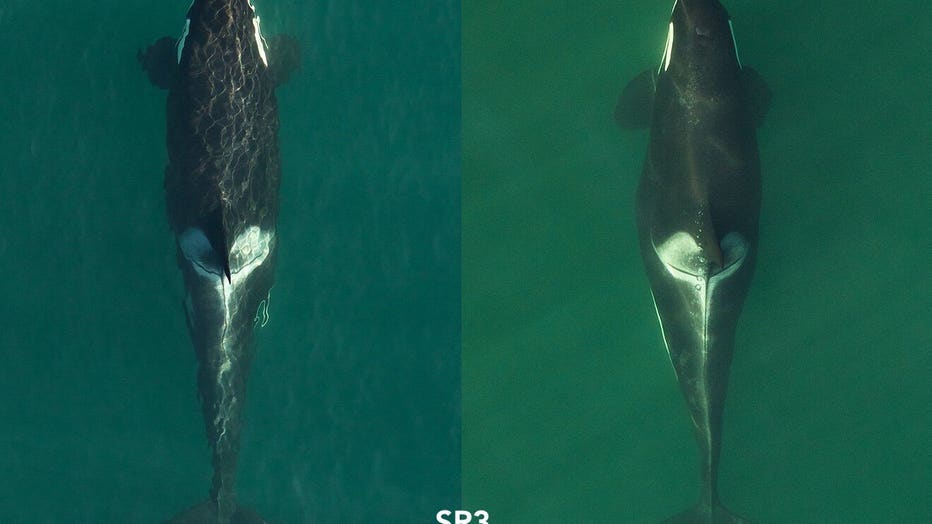Southern resident orca that carried her dead calf for 17 days is pregnant again
SEATTLE - A bittersweet moment for two southern resident orcas: both are expecting. One of the pregnant orcas is Tahlequah - or J35 - the southern resident that made national and international headlines when she carried her dead calf for 17 days and more than 1,000 miles.
Tahlequah's "tour of grief" in Puget Sound captivated hearts throughout the world.
"It's quite exciting because this is the first we heard this year of any of our Southern residents being pregnant," said Brad Hanson, a wildlife biologist at NOAA Fisheries, Northwest Fisheries Science Center.
Aerial photos released this week of the region's critically endangered southern resident orcas showed "a number" of pregnant killer whales from all three southern resident pods, according to the nonprofit SR3 - Sealife Response, Rescue and Research.
Scientists discovered J35 was pregnant again using images from a drone.
"Aerial image of her in September 2019 versus now and you can see that particularly after the dorsal fin she's wider. Usually when they fatten up they're more evenly distributed," said Hanson.
Scientists found a second southern resident orca, L72, is also pregnant. It's welcoming news for the endangered species because every successful birth is hugely important for recovery.
Hanson said successful births are not always guaranteed because of lack of prey, toxins and contaminants, vessel noise, and their small population size.

L72 pregnancy photo courtesy SR3 - Sealife Response + Rehab + Research
According to the SR3 website, researchers are hopeful but realistic, as unfortunately, "the majority of recent pregnancies have not resulted in successful births."
It's hard to tell how far along the orcas are but the gestation period lasts typically 17-18 months. Scientists are working to increase salmon production so the orcas have plenty to eat and urging people to also do their part.
"Try to do things that would not be polluting the environment because the other aspect is having high quality prey with relatively low contaminants in the prey," added Hanson.
"Studies by our colleagues at the University of Washington have shown that these reproductive failures are linked to nutrition and access to their Chinook salmon prey, so we hope folks on the water can give the Southern Residents plenty of space to forage at this important time," SR3 researchers said.
Southern resident orcas typically inhabit the waters of Washington state and British Columbia during the spring and summer. This year, however, visits from the southern resident orca pods have been scarce in the Puget Sound, leading some researchers to reach the tragic conclusion that our southern resident orcas are residents no more.
“They were known as residents because people expected to see them from about mid-May through October here, but now that’s just not the case,” Deborah Giles, an orca research scientist for University of Washington’s Center for Conservation Biology, told Q13 News in early July.
Earlier this summer, fractured pods made only sporadic appearances inland, with some visits lasting less than a day.
According to the Center for Whale Research, there are only 73 southern resident orcas left.
"With such a small population, every successful birth is hugely important for recovery," SR3 said in its blog post.

